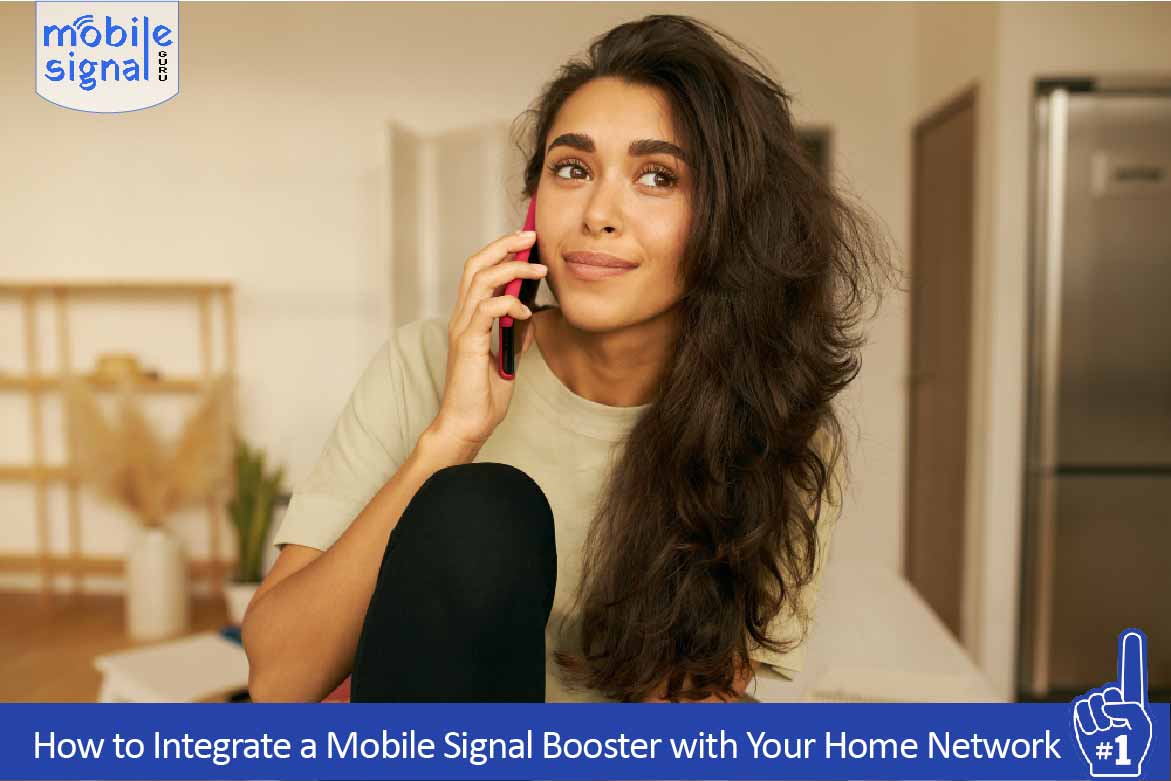A mobile signal booster can greatly improve your cell signal and enhance the overall performance of your home network. Whether you’re struggling with weak signal strength or dropped calls, you can integrate a mobile signal booster into your home network and ensure strong and reliable connections throughout your home. In this guide, we’ll walk you through how to effectively set up and integrate a mobile signal booster with your existing home network.
What Is a Mobile Signal Booster?
A mobile signal booster, also known as a repeater, amplifies weak cell signals to improve connectivity inside your home. It consists of three main parts:
- External Antenna: Captures the existing weak signal outside your home.
- Amplifier: Boosts the strength of the signal.
- Internal Antenna: Rebroadcasts the stronger signal throughout your home.
By amplifying the mobile signal, the booster helps improve call quality, data speeds, and overall network reliability.
Why Integrate a Mobile Signal Booster with Your Home Network?
Integrating a mobile signal booster into your home network offers several advantages:
- Improved Call Quality: Clearer voice calls with fewer dropped calls.
- Faster Data Speeds: Faster 4G or LTE data for smoother internet browsing, streaming, and downloads.
- Wider Coverage: Extend your mobile coverage to every corner of your home.
- Enhanced Network Performance: Supports multiple devices connected to the same network.
Now that you understand the benefits, let’s look at the steps to integrate a signal booster with your home network.
Steps to Integrate a Mobile Signal Booster with Your Home Network
Step 1: Choose the Right Signal Booster
The first step is to choose the right signal booster for your home. Consider the following factors:
- Coverage Area: Ensure the booster can cover the size of your home. Some boosters are designed for small apartments, while others can cover large houses.
- Network Compatibility: Make sure the booster is compatible with your carrier and supports the frequency bands used by your network (e.g., 4G LTE, 5G).
- Number of Users: Choose a booster that can support the number of users in your household without compromising signal strength.
Step 2: Find the Best Location for the External Antenna
The external antenna is crucial for capturing the existing mobile signal. Place the antenna:
- Outside: Mount the antenna on your roof or an exterior wall.
- High and Clear: Ensure the antenna is positioned high and free from obstructions like trees, buildings, or metal structures.
- Point Toward the Nearest Cell Tower: Use an app or online map to locate the nearest cell tower and point the antenna in that direction.
Step 3: Install the Amplifier Inside Your Home
Once the external antenna is in place, it’s time to install the amplifier inside. Follow these guidelines:
- Close to Power Source: Place the amplifier near a power outlet and central area of your home.
- Connect to External Antenna: Use the included cable to connect the amplifier to the external antenna. Ensure the connection is secure.
Step 4: Position the Internal Antenna
The internal antenna rebroadcasts the amplified signal throughout your home. To get the best coverage:
- Central Location: Place the internal antenna in a central part of your home for even signal distribution.
- Avoid Interference: Keep the internal antenna away from large metal objects or other electronics that could interfere with the signal.
Step 5: Test the System
After the installation, it’s important to test your signal booster to ensure everything is working correctly:
- Check Signal Strength: Use your mobile phone to check the signal strength in different areas of your home.
- Fine-Tune the Position: If the signal is still weak in some areas, adjust the position of the external antenna or internal antenna to optimize coverage.
Step 6: Connect Your Devices
Once the mobile signal booster is operational, your mobile devices should automatically connect to the boosted signal. You don’t need to configure your devices, as they will use the stronger signal provided by the booster.
Step 7: Monitor and Maintain the Booster
To ensure your signal booster continues to perform well, follow these maintenance tips:
- Check for Obstructions: Periodically check the external antenna for any new obstructions that could affect signal strength.
- Monitor Performance: Keep an eye on call quality and data speeds to detect any issues early.
- Regular Cleaning: Dust and clean the amplifier and antennas to keep them in good condition.
Common Mistakes to Avoid
When integrating a mobile signal booster with your home network, it’s essential to avoid common mistakes that can affect performance:
- Incorrect Antenna Placement: Placing the external antenna too low or in a blocked area will limit the signal strength.
- Too Much Distance Between Components: Ensure the external and internal antennas are connected properly, and the cables are not too long, as long cables can result in signal loss.
- Overloading the Booster: Make sure your booster can handle the number of users and devices connected to it.
Conclusion
Integrating a mobile signal booster with your home network is a simple and effective way to enhance signal strength, improve call quality, and increase data speeds. By following the steps outlined in this guide, you can ensure a successful installation and enjoy better mobile connectivity throughout your home. Choose the right booster, place the antennas strategically, and maintain the system for long-lasting performance. With a properly integrated signal booster, you’ll never have to worry about weak signals or dropped calls again.
 Australia (AUD)
Australia (AUD) Denmark (DKK)
Denmark (DKK) France (EUR)
France (EUR) Germany (EUR)
Germany (EUR) Ireland (EUR)
Ireland (EUR) Malta (EUR)
Malta (EUR) Netherlands (EUR)
Netherlands (EUR) New Zealand (NZD)
New Zealand (NZD) Norway (NOK)
Norway (NOK) Spain (EUR)
Spain (EUR) Sweden (SEK)
Sweden (SEK) UAE (AED)
UAE (AED) United Kingdom (GBP)
United Kingdom (GBP)
